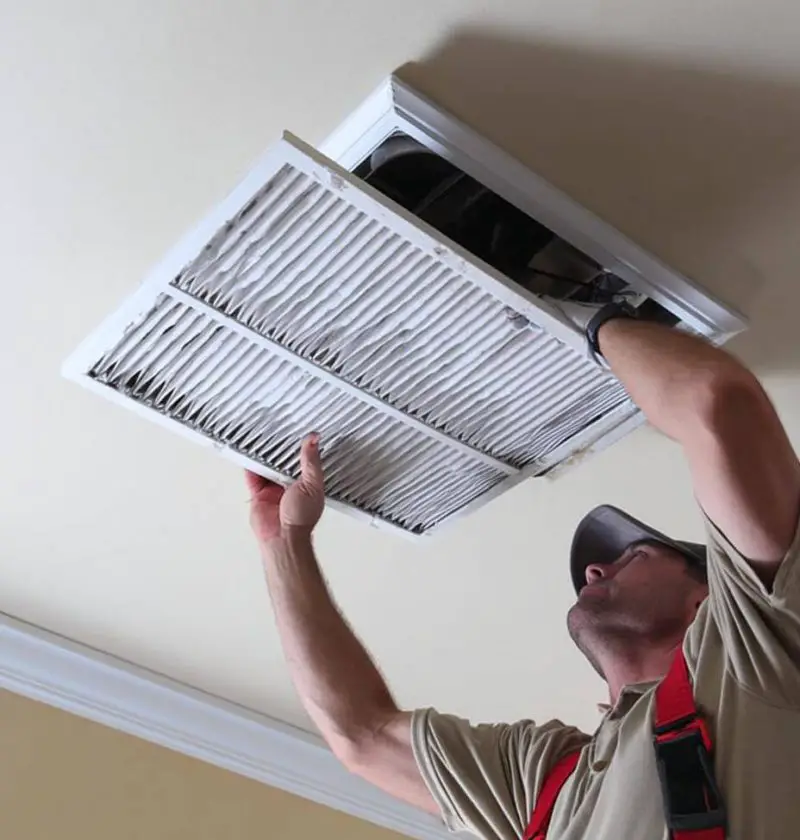Save This Recipe
Let me tell you something I learned the hard way. A few winters ago, I was folding a mountain of laundry (as one does), and noticed the dryer was running… again. Same load. Still damp. I figured it was time to buy a new dryer — until my neighbor casually asked, “When’s the last time you cleaned the vent?” The vent? You mean the lint trap, right? Nope. That innocent-looking hose behind the machine was a ticking time bomb of lint, and I had no clue.
Turns out, cleaning the dryer vent, not just the lint screen, can save you a whole lot of hassle — and maybe even your house. Let’s get into what most folks get wrong and how to make it right.
Why You’ll Be Glad You Did This
-
Fire Safety First: Lint is basically kindling. Keeping the vent clean helps prevent dryer fires.
-
Shorter Drying Times: No more running the dryer twice for the same load.
-
Energy Efficiency: Less energy wasted means lower utility bills.
-
Longer Appliance Life: A dryer that breathes well lives longer.
First Things First — What Not To Do
Here’s the thing: most people think pulling lint off the screen is enough. I used to! But that’s like brushing crumbs off your counter and thinking the whole kitchen’s clean. The real mess is hiding in the ductwork — where lint cakes up over time and strangles your dryer’s airflow.
Common slip-ups:
-
Using makeshift tools like coat hangers (please don’t — you can damage the vent).
-
Forgetting to unplug the dryer first (safety first, always).
-
Only cleaning the inside, and not checking the outside vent exhaust.
Step-by-Step: How to Clean Your Dryer Vent the Right Way
You don’t need to be handy — just a little patient and thorough. Here’s how I do it:
1. Unplug Everything and Move the Dryer Gently
Whether it’s electric or gas, unplug the dryer. If it’s gas, be very careful not to dislodge the gas line — maybe call in help for that part. Slide the dryer forward to access the vent hose.
2. Disconnect the Vent Hose
Loosen the clamp or remove the screws holding the hose to the back of the dryer. This part might be dusty — I recommend a mask if you’re sensitive to lint and old dust.
3. Grab That Vacuum (with Hose Attachment)
Vacuum inside the dryer vent opening and the hose itself. This catches a good chunk of the buildup. If you hear little clumps rattling inside, don’t worry — that’s next.
4. Use a Dryer Vent Brush Kit
These kits are lifesavers and run about $20 online or at hardware stores. The flexible brush reaches deep into the duct and scrapes out the hidden stuff. Work from both ends — indoors and outside — for best results.
5. Check the Outside Vent Flap
Go outside and inspect where the dryer vents out. Clear away leaves, snow, or any debris. The flap should open easily while the dryer’s running.
6. Reattach Everything and Test It
Reconnect the hose, slide the dryer back (carefully), and plug it in. Run a short cycle to make sure everything’s flowing right — you should feel warm air blowing outside.
A Few Handy Variations
-
Short on Time? If you can’t do the full clean, at least vacuum and brush what you can reach from both ends.
-
Hard-to-Reach Vents? Consider a professional cleaning once a year. It’s worth the peace of mind.
-
No Outside Access? A backdraft damper cover might help prevent debris and pests from sneaking in.
What About Winter?
Cold snaps can cause real issues — snow piles block vents, and frozen ductwork becomes brittle. After a big storm, I make it a habit to check the outside vent and brush away any snow or ice.
Tempted by Those Viral Hacks?
I’ve seen them too — TikToks using leaf blowers, vacuums taped to brooms, even reverse-shop-vac stunts. Some work… kind of. But here’s the truth: if it sounds too easy, it probably skips the hard-to-reach spots where lint hides. And worse, some tricks just pack the lint in tighter.
Stick with the basics: brush, vacuum, repeat.
Tools That Actually Work
Here’s what I keep on hand:
-
Dryer vent brush with flexible rod
-
Vacuum with hose attachment
-
Screwdriver (to loosen hose clamps)
-
Flashlight (for peeking inside vents)
-
Dryer vent cleaning kit (the ones with rods that attach to drills are handy!)
So, How Often Should You Really Do This?
For most households, once a year is the sweet spot. If you’ve got a big family — or pets that shed — every six months might be safer. As always, trust your instincts. If drying starts taking longer, don’t ignore it.
Signs your dryer vent needs attention:
-
Clothes take longer to dry
-
Dryer feels hot to the touch
-
Musty or burning smells
-
Lint piling up around the dryer or outside vent
Let’s Keep Each Other Safe (and Fluff-Free)
Dryer vent cleaning isn’t exactly glamorous, but it’s one of those tasks that really pays off. It saves time, energy, and money — and can even save lives.
If you’ve got questions, or maybe a funny story about a dryer mishap (I’ve got plenty), drop a comment. I’d love to hear from you. And if this helped, share it with a friend — especially the one who always blames the dryer for shrinking their clothes
Warmly,

